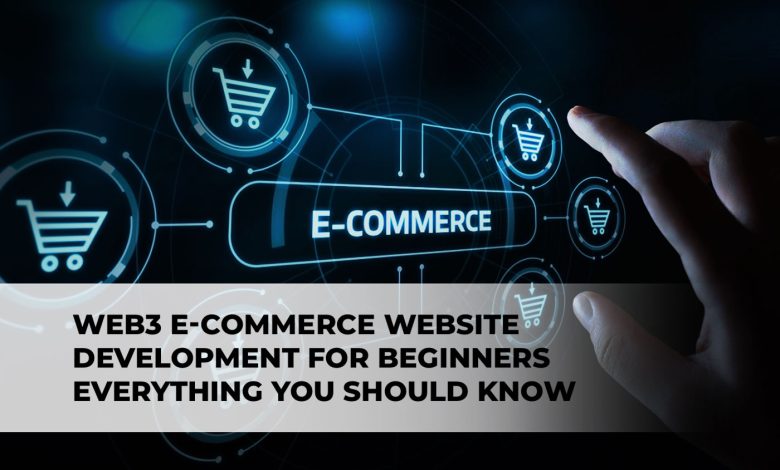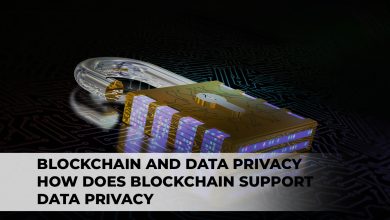
Are you looking for an easy-to-follow guide to getting into Web3 e-commerce website development? If so, you’ve come to the right place. This blog will provide beginners with a comprehensive overview of all aspects of Web3 e-commerce website development, from architecture design and coding through deployment. We’ll cover topics such as the principles of decentralization, implementing a payment gateway, and setting up online product search capabilities. Get ready to learn everything you need to know about creating successful web applications built on decentralized infrastructure!
Before We Begin: What Does Web3 Mean for E-Commerce?
Web3 is ushering in a new era of the internet that focuses on decentralized, peer-to-peer networks and blockchain technology. This has significant implications for e-commerce businesses, offering increased security, transparency, and accessibility – just to name a few! Here are some key ways you can leverage Web3 to revolutionize your e-commerce business:
Decentralized Marketplaces:
Through the use of Web3, buyers, and sellers can now transact with each other directly without requiring a middleman. This eliminates unnecessary costs, increases security and trustworthiness within e-commerce platforms, and encourages transparency between customers.
Digital Identity:
Web3 grants the capacity to craft digital identity systems that are more dependable and decentralized than traditional frameworks. This opens up doors for e-commerce websites, helping them restrict fraudulence while also affirming that all transactions occur with legitimate individuals.
Smart Contracts:
Smart contracts can automate transactions, as the terms of each agreement between a buyer and seller can be programmed directly into code. By leveraging Web3 technology, smart contracts offer immense potential for e-commerce solutions, proving particularly useful in streamlining business processes while eliminating costly intermediaries.
Cryptocurrencies:
Web3 is revolutionizing how e-commerce transactions are conducted, with the increased security and privacy cryptocurrencies provide when compared to conventional payment methods. Furthermore, utilizing these currencies minimizes transaction fees and speeds up the process significantly.
Improved Customer Experience:
Web3 is revolutionizing the customer experience by leveraging decentralized data and AI-driven recommendations, creating a more personal and effortless shopping journey. This not only helps e-commerce platforms build stronger bonds with customers but also boosts their sales figures!
With its increased security, transparency, and accessibility, Web3 could revolutionize the e-commerce industry. Platforms will need to keep up with the latest advancements in this technology to reap its benefits fully. By utilizing best practices and staying informed on developments, they can ensure that their platform is taking advantage of all Web3 has to offer.
Web3 E-Commerce Website Development: Architecture Design
Crafting an e-commerce website with Web3 technology necessitates thoughtful consideration of the architecture’s blueprint. When designing your Web3 e-commerce site, here are some essential points to take into account:
- Decentralized architecture: For true e-commerce autonomy, a Web3 website should leverage revolutionary blockchain technology and decentralized applications (dApps) to develop a direct connection between buyers and sellers. Not only does this structure eliminate the need for intermediaries, but it also creates an agile peer-to-peer network with fast transactions.
- Smart contracts: Construct a website architecture that is specifically designed to support smart contracts. Smart contracts are computer-generated agreements between the buyer and seller, with all terms of the bargain encoded into lines of code. Introducing them into your business processes allows you to streamline transactions and remove reliance on third parties.
- Cryptocurrency payment: For Web3 e-commerce to reach its full potential, it’s essential to have the ability to accept a variety of cryptocurrencies as payment. To do this, one must integrate different payment gateways supporting many cryptocurrencies.
- Decentralized storage: InterPlanetary File System (IPFS) and other decentralized storage options are essential for a successful Web3 e-commerce experience, providing secure and dependable transaction data retention. Decentralized storage is the key to trustless transactions.
- User authentication: For e-commerce to succeed on the Web3 platform, secure user authentication is necessary. To ensure transactions are safe and free of fraud, an architecture that supports decentralized identity (DID) systems should be implemented for complete assurance.
- Scalability: To ensure an e-commerce website built on Web3 technology can manage large transaction volumes, scalability should be a key consideration when designing the system. A distributed computing architecture like sharding can significantly boost its processing capacity to meet this need.
- User interface: Creating an intuitive, secure, and responsive user interface across multiple devices should be the main focus of web design. This ensures users have a smooth experience while utilizing your website to buy or sell products with ease. By providing easy-to-use tools, buyers and sellers can transact securely without any confusion.
Web3 E-Commerce Website Development for Beginners: Coding
Creating a Web3 e-commerce website requires an understanding of programming and web development, as well as some familiarity with blockchain technology. If you’re just starting out in the world of coding for these types of websites, here are several key points to consider:

HTML, CSS, and JavaScript:
Undoubtedly, web development requires core foundational languages; HTML, CSS, and Javascript play integral roles. As a beginner, understanding the different purposes of each is a critical fundamental skill to develop. HTML structures web pages by providing “building blocks” – it builds the components needed to construct a page. CSS functions to style these components giving your page flair and interactivity. Then there’s how JavaScript optimizes for dynamic interactions allowing for smooth website navigation for an enjoyable user experience. Learning these languages before diving into Web3 development surely puts you on the proverbial fast track toward success.
Solidity:
Solidity is an industry-popular, open-source programming language that helps create and boost the functionality of a blockchain network. It’s’ specifically employed on the Ethereum blockchain to make write smart contracts – always a core component in modern-day e-commerce experiences. Accordingly, it’s a great jumping-off point for any tech enthusiast or website administrator – one with knowledge of Solidity’s’ syntax who can use that expertise to develop highly functional smart contracts applicable across the Web3 space. With some directed study on Tech Stack syllabuses and guided tutorials, beginners of all ages and experience levels can quickly dive into these concepts and put them into action.
Web3.js:
Web3.js is a JavaScript library enabling developers to interact with the Ethereum blockchain right at their fingertips. Developers can leverage Web3.js to build decentralized applications that adhere to decentralized protocols, like utilizing smart contracts. It is essential for developers of all levels to become acquainted with these progressive tools made available by Web3.js — regardless of your experience, acquiring knowledge on how to use such frameworks opens unprecedented design and development opportunities. Beginners should take the initiative when engaging with the technology; a deeper understanding of the nuances of developing with Web3 APIs allows users to propel their applications into modern blockchain paradigms.
Decentralized storage:
If you’re new to the e-commerce world, one part of your business that’s key is secure and reliable storage for your transactional data. As we mentioned previously, Web3 e-commerce sites require decentralized storage for this purpose. Fortunately, there are several excellent solutions out there. IPFS is one of those applicable solutions that’s become rather popular in the distributed applications and web finance world. Being adept at integrating IPFS into your websites is a great starting point if you want to learn how to store transactions securely in this space.
Security:
The security of Web3 e-commerce is paramount. If you are just getting started with Node Chain technology, it is critical to understand the best practices for blockchain system security. Knowing how to secure smart contracts, prevent front-running and re-entrance attacks, and implement secure user authentication will allow you to fully utilize these powerful transactions. The safety of all involved should be at the forefront of your mind when trading and engaging in eCommerce transactions utilizing this technology. Utilizing known security measures gives users — and traders — a piece of mind as data on these systems can be effectively protected from malicious actors.
Testing:
Software development projects are only as successful as they are tested, and Web3 e-commerce is no different. Writing tests grants you peace of mind by showing that functions are working properly with the parameters you set. Tests can be done to clearly confirm that each web3 component solidity codes, decentralized apps, and other smart contracts adhere to your specifications. Particularly for those just starting out in the world of Web3 programming, a keen understanding of how to properly write tests is essential and can only be gained through repetition, feedback loops, and exercising responsible development practices.
Web3 E-Commerce Website Development: Setting Up a Paywall
A paywall is essential for numerous Web3 e-commerce websites providing premium content or services. To ensure the successful implementation of a paywall during/after website development, here are some steps to follow:
Choose a Payment Method:
With the expansive range of payment options offered in Web3, such as cryptocurrency and stablecoins, you can seamlessly select a method that meets your website’s needs and resonates with its users. Take advantage of this versatility to grow your business!
Integrate a Payment Gateway:
When you’ve selected your payment method, it’s time to link a payment gateway. Highly popular Web3 gateways like Coinbase Commerce, BitPay, and Wyre are ideal for handling transactions.
Set up Smart Contracts:
Smart contracts are an ideal solution for automating your payment processing and subscription management processes. Crafting the right contract setup will allow you to ensure payment verification and streamline subscription management, making it easier than ever!
Design the Paywall:
Craft a paywall that is simple to comprehend and elucidates the perks of upgrading to premium. Using an eye-catching pop-up or modal window that outlines these benefits can be highly effective in achieving this goal.
Test and Optimize:
Evaluate the paywall regularly to confirm that it is functioning as expected, and buyers can immediately switch to a premium account. Enhance the paywall based on user feedback and analytics for optimal conversion rates.
Consider Regulatory Compliance:
If your Web3 e-commerce website is situated in a particular jurisdiction, you must familiarize yourself with regulations such as KYC/AML (Know Your Customer/Anti-Money Laundering) and data protection laws to ensure legal compliance. To meet these requirements, it’s crucial to take the necessary steps and implement appropriate measures.
Web3 E-Commerce Website Development: Implement Online Product Search Capabilities
Crafting a seamless online product search experience is essential for any Web3 e-commerce website. Here are some simple steps to get started:
- Define your product search requirements: When you’re thinking about the product search capabilities your website needs, don’t forget to consider keyword search, filtering by product attributes such as size or color, and sorting items according to relevance or popularity.
- Choose a search engine: To ensure your Web3 e-commerce website is searchable and fast, selecting the right engine to suit your product requirements and technology stack is essential. Amongst the top choices are Algolia, Elasticsearch, and Solr – each of which has been tailored to enhance user experience while providing superior speed & precision in results.
- Configure search settings: To make sure the search engine is set up to meet your website’s requirements, adjust the settings accordingly. This includes fiddling with relevance configurations, forming synonyms, and generating facets for filtering.
- Implement search UI components: Craft an effortless search experience for your website visitors by incorporating user-friendly UI components, including search bars, filters, and sorting options. Ensure that their navigation is straightforward and hassle-free.
- Test and optimize: Ensure the product search feature performs properly and delivers exact results. With user reviews, data analysis, and feedback in mind, optimize the search function to make it even more relevant to customers while offering a seamless experience.
- Consider integrating machine learning: To stay competitive and offer the best possible user experience, why not consider leveraging machine learning algorithms for your product search function? This way, you can give customers more tailored results and enhance accuracy over time.
By taking these steps, you can create an efficient, precise, and user-friendly search experience for your website visitors during the Web3 e-commerce development process. This product search capability will allow them to quickly find whatever they are looking for on your website with ease.
Web3 E-Commerce Website Development: Common Obstacles in Web3 Websites
The development of a web3 e-commerce website as a beginner can be daunting, often accompanied by certain hindrances. Here are some common roadblocks and advice on how to surmount them:
Lack of Experience with Web3 Technologies:
Overcoming the challenge of web3 technology’s complexity can seem daunting, but it is possible with adequate time spent comprehending its fundamentals. Immerse yourself in blockchain, smart contracts, and decentralized storage to get a better grasp of these cutting-edge technologies.
Integration with Legacy Systems:
Constructing a web3 e-commerce website for an existing business can be overwhelming, especially when integrating the new website with legacy systems. Despite these intricate and challenging conditions, it is possible to succeed in developing a fruitful site through close collaboration with the stakeholders involved. By understanding their requirements and being aware of any limitations imposed by legacy systems, you can create a successful web3 e-commerce platform that exceeds all expectations!
Security Concerns:
Despite being incredibly helpful, Web3 e-commerce websites are not invulnerable to cyber threats. To make sure your site is safe from malicious activity like hacking, phishing, and malware attacks, consider using strong security protocols such as encryption technologies and two-factor authentication for account logins. Furthermore, conducting regular security audits can help identify any existing or potential vulnerabilities in the system.
Regulatory Compliance:
To guarantee the smooth operation of your web3 e-commerce website, you must understand and adhere to government regulations. This entails familiarity with data protection laws and financial rules in your area so you can implement suitable measures for compliance. Doing this will help prevent any potential obstacles hindering your business’s growth.
Scalability:
As your web3 e-commerce website expands, it could become increasingly difficult to scale the site to accommodate increased traffic and transaction volume. To rise above this issue, you must design your website with scalability at its core, taking advantage of technologies such as decentralized storage and cloud computing.
Utilize your knowledge of these typical challenges and strive to surpass them, ultimately achieving an advantageous web3 e-commerce website that caters to the requirements of both you and your customers.
Conclusion:
While a website’s design and content give customers a general impression of your business, the web3 e-commerce model ensures that all transactions are secure and reliable. This type of e-commerce solution provides greater visibility in the digital marketplace while also offering flexibility to cater to multiple customer needs. Understanding the web3 e-commerce website development process can help beginners maximize their site’s possibilities and drive more conversions. Furthermore, for those just learning what web3 is about, it can be invaluable to have knowledgeable industry professionals at their disposal to help guide decisions. Investing in this technology now will pay dividends for your business in the long run. With these tips, you can capitalize on all of the rewards that come with this resourceful tool for everyone ranging from novice developers to successful entrepreneurs. Start taking advantage of the web3 e-commerce potential today!







